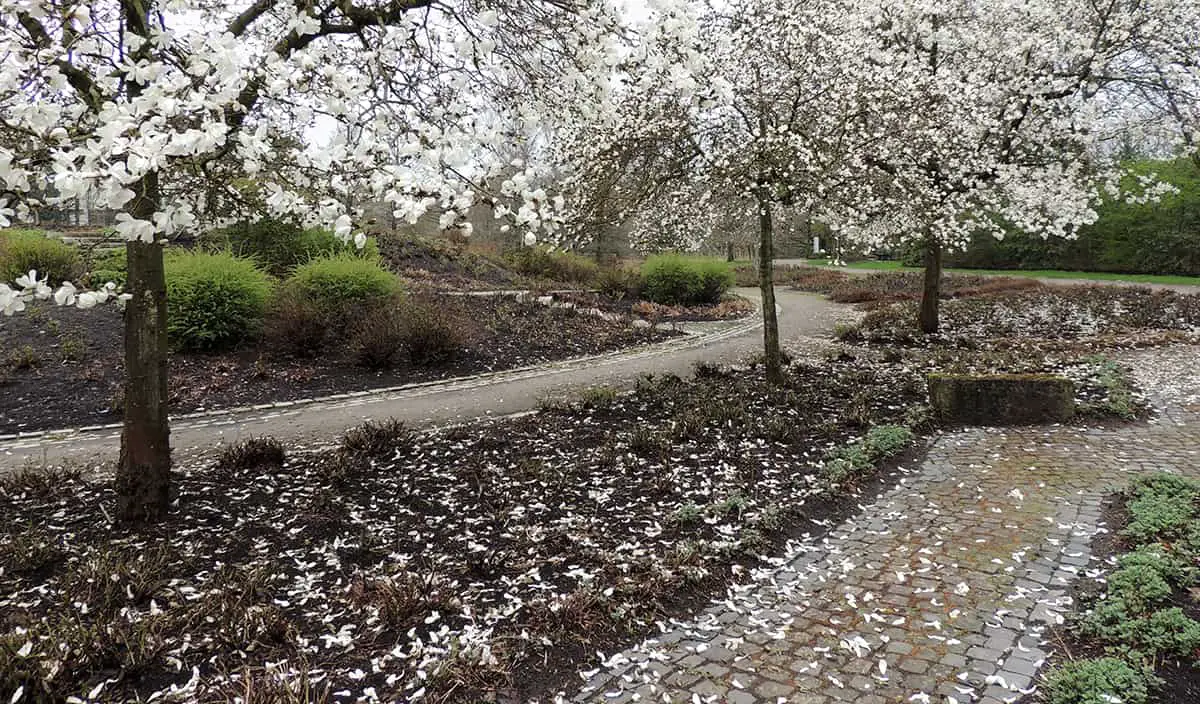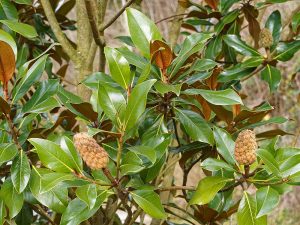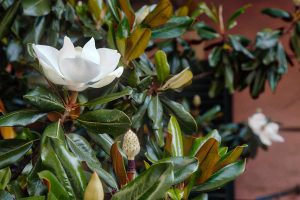Magnolia trees are not known for their fast growth, and in fact, many species of magnolia are considered to be slow growing. If you are looking for a tree that will quickly shoot up and give your garden a mature look, then magnolias may not be the best fit. Magnolia trees can require patience but they are an investment that really pays off in beauty when they bloom profusely with an array of giant flowers.
Most species of magnolia trees will take between 20 and 50 years to reach their maximum heights. There are a few species that grow more quickly and will have reached their mature size between 10 and 20 years, though these are in the minority.
Typically, magnolia trees will grow quickly and vigorously for the first decade of their life, and then growth will slow down significantly, meaning that they do not reach their ultimate height until many years later.
Table of Contents
Average Annual Rate of Magnolia Tree Growth
Most species of magnolia have a moderate speed of growth, typically gaining anywhere between 1 foot and 4 feet in height each year. Some magnolia plants have a slow growth rate, but this is balanced out by many species of magnolia which grow much more quickly.
The average annual growth rate of a typical magnolia is 2 feet in height per year. In terms of spread, the growth rate will be similar, or slightly more modest than the gain in height.
Fast-Growing Magnolia Trees
Merrill Magnolia

Botanically known as Magnolia x loebneri ‘Merrill’, this plant is a hybrid of the Kobus Magnolia and the Star Magnolia. It is most often grown as a large multi-stemmed shrub, but it can also be trained as a small tree. It is known for the profusion of huge white flowers it sends out in spring, and for its fast-growing nature.
The plant has achieved the Award of Garden Merit from the Royal Horticultural Society, in recognition of its outstanding growth and visual appeal. The Merrill Magnolia grows to ultimate heights of between 20 and 30 feet, and unlike many other types of magnolia, it does not need to be mature in order to flower.
It will bloom at a young age, making it ideal for impatient gardeners who don’t want to wait many years to witness its stunning floral display.
Saucer Magnolia ‘Lennei’
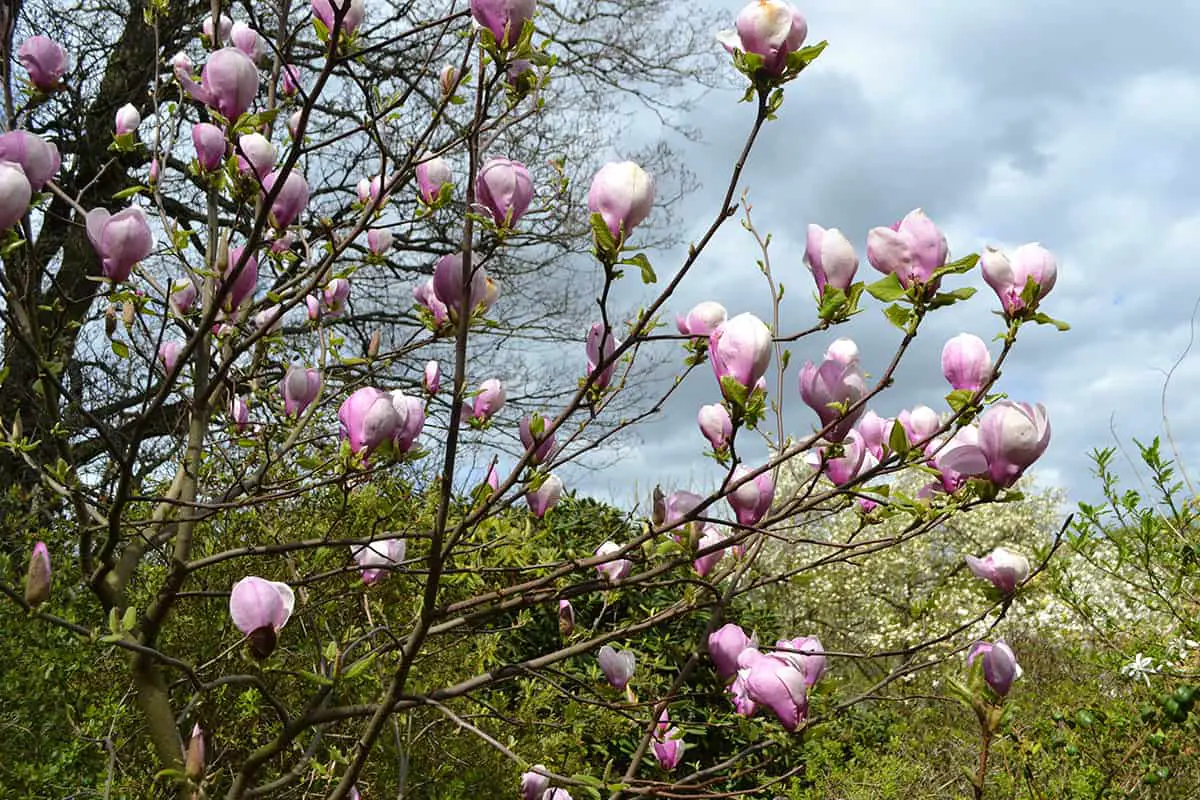
This hybrid magnolia is botanically known as Magnolia x soulangeana ‘Lennei’, and it can be grown as either a spreading deciduous shrub or a small tree. It grows vigorously in its initial stages, reaching around 15 feet in height in under a decade, and then slowing down until it reaches its eventual height of around 25 feet.
Though this rate of growth is slower than many of the large magnolia trees, it is considered to be fast for a shrub. This plant is famed for its huge goblet-shaped flowers, which are a dark shade of purple on the outer petals, and almost pure white on the inside.
Southern Magnolia
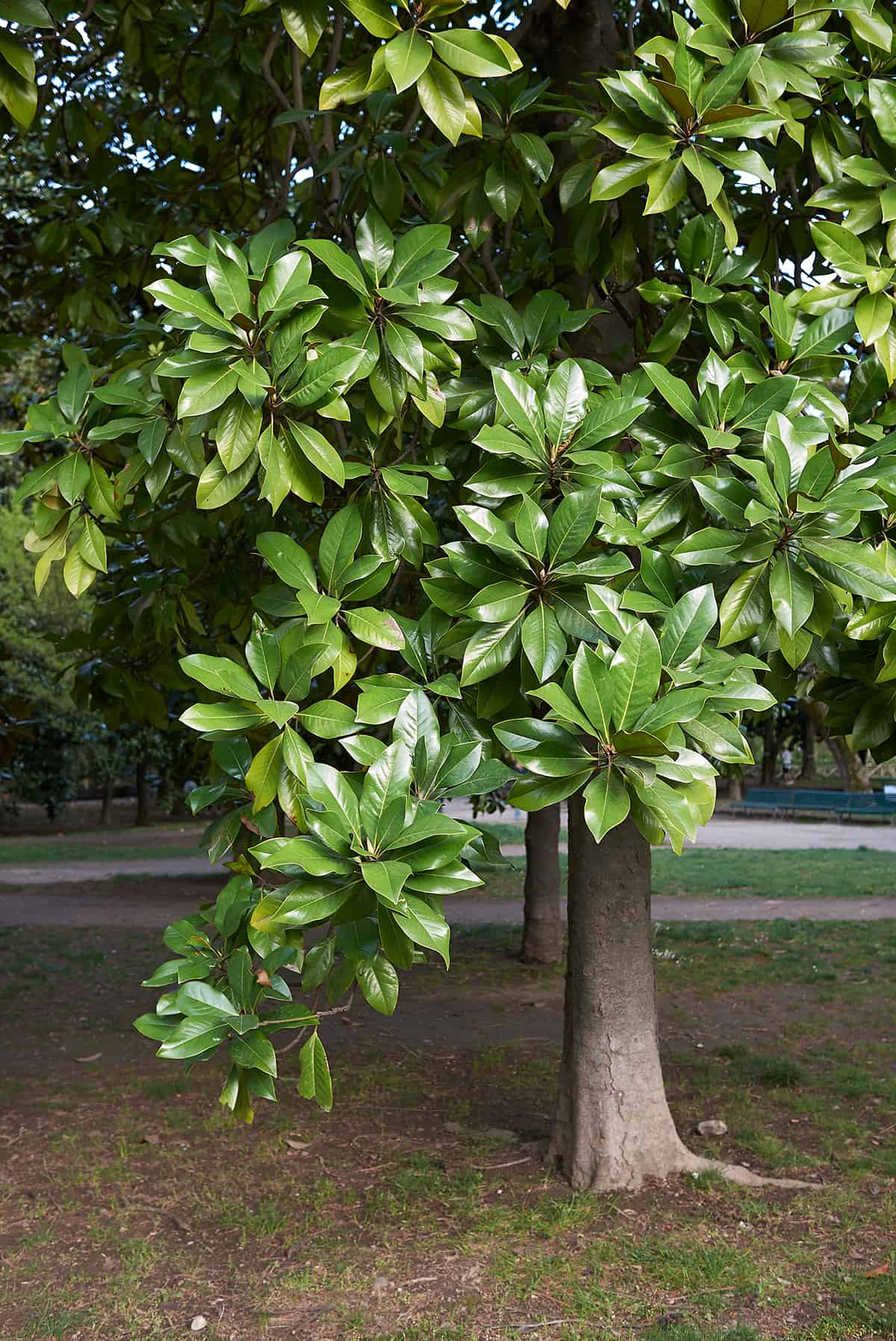
Southern Magnolia trees are fast-growing compared with many other types of magnolia, so this is a good choice if you want to witness some vigorous growth. The Southern Magnolia (Magnolia grandiflora) typically takes around 30 years to reach 80 feet in height and 50 feet in width, meaning that on average, the tree will gain over 2 feet in height each year.
In reality, the tree grows more quickly when young, and slower when maturing, so you might be more likely to see gains of 3 feet per year earlier on in the tree’s life, and gains of 1 foot each year as it ages. This tree is incredibly popular, due to its enormous white 8-inch flowers which bloom in spring and continue to appear through summer and even into fall.
Magnolia ‘Hot Flash’
This is one of the faster-growing types of magnolia, which will reach a height of around 30 feet in 10 years. This equates to a growth rate of 3 feet per year.
The deciduous tree produces tulip-shaped flowers in a deep, buttery shade of yellow, which are sometimes flushed with pink at the base. It blooms later in spring than the early-blooming magnolias, which means it is less likely to be affected by late frosts.
Slow-Growing Magnolia Trees
Magnolia x loebneri ‘Encore’
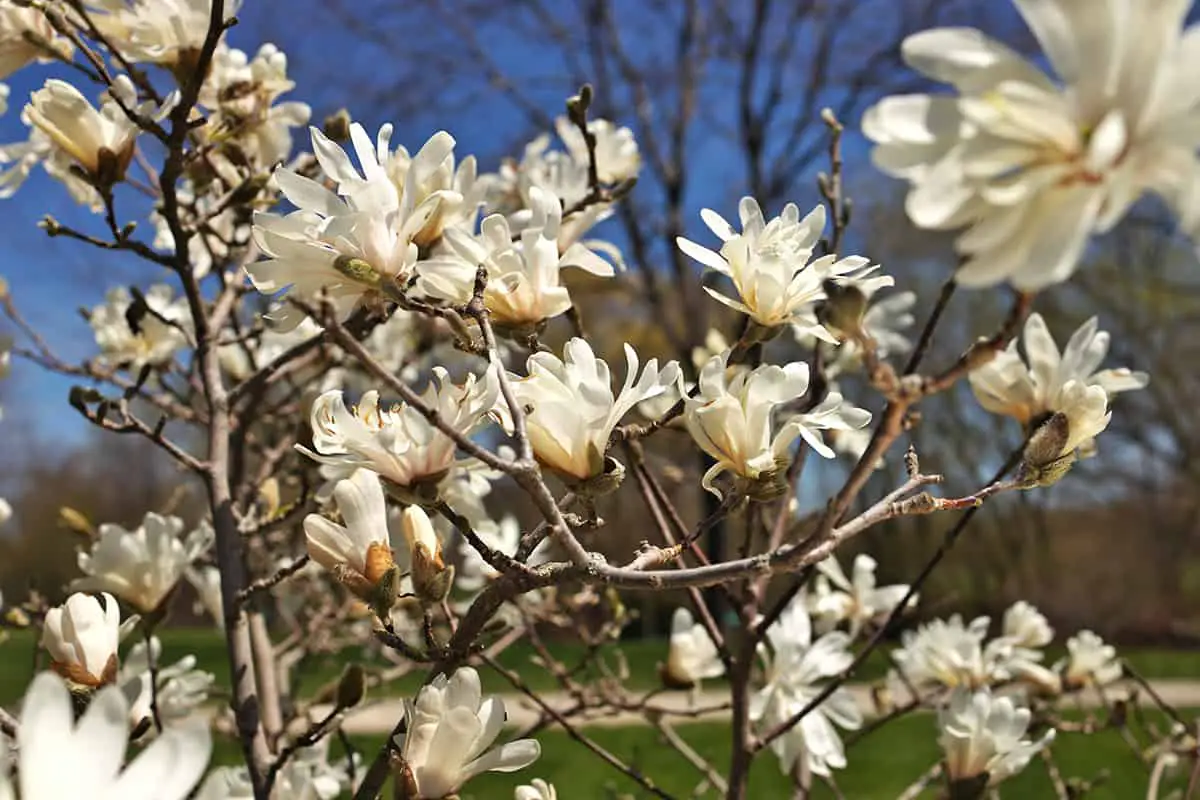
This is a slow-growing type of magnolia that can take the form of a large shrub or small tree. It grows to between 8 and 15 feet in height, and 6 to 15 feet in width, typically taking between 10 and 20 years to reach ultimate size.
This works out at an annual growth rate of less than 1 foot. The plant is named ‘Encore’ because it blooms profusely from early spring through to summer, with white flowers flushed with pale pink. Each flower opens in succession, creating continuous encores of blooming.
Magnolia ‘Susan’
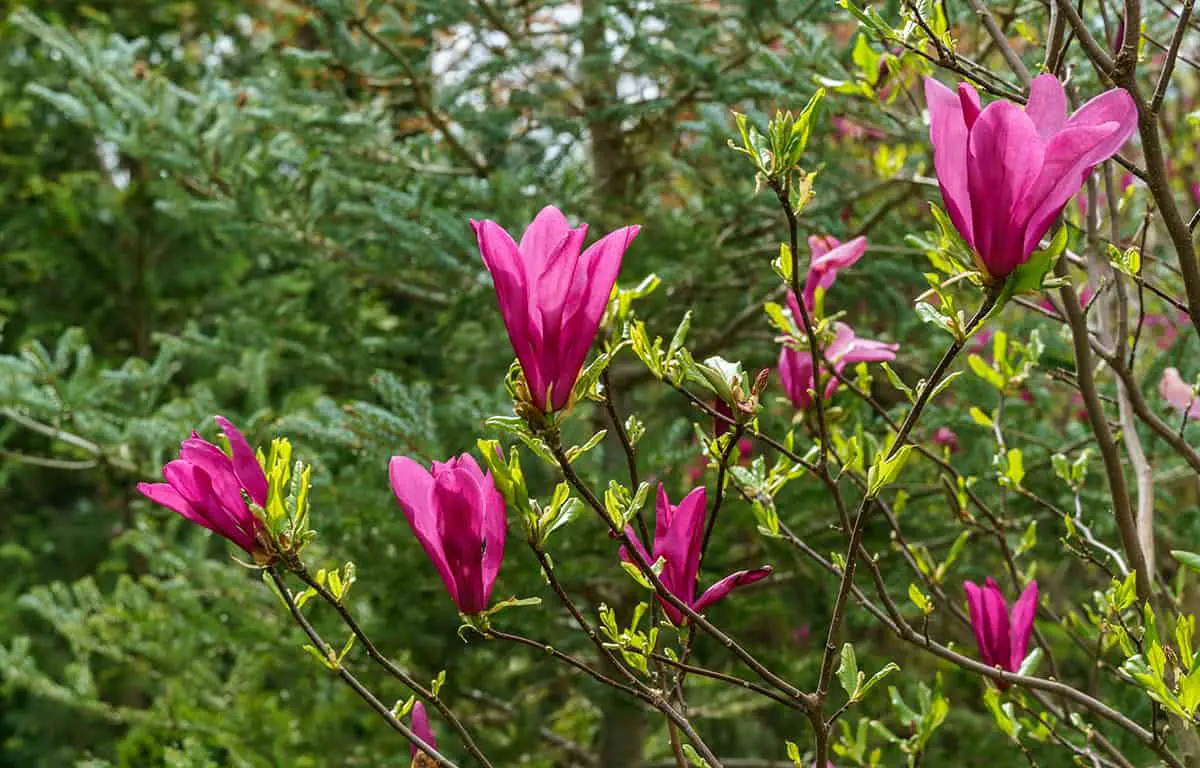
This magnolia is a hybrid that was developed in the 1950s. It is the result of crossing Magnolia lilliflora (Lily Magnolia) ‘Nigra’ with Magnolia stellata (Star Magnolia) ‘Rosea’. It has a slow-growing nature, gaining less than 1 foot in height each year. It reaches an ultimate size of between 8 and 12 feet in height, and 8 and 12 feet in width.
Typically it will take between 10 and 20 years to get to this relatively small stature. Fortunately, you don’t have to wait for this plant to mature before you can enjoy its flowers, since it is an early bloomer and will come into flower at a young age. The flowers are held in an upright position on the stems and have a narrow shape.
They are purple on the outer petals, while inside they are pale lilac. This compact magnolia is ideal for small gardens where it will not quickly outgrow its space. It has received the Award of Garden Merit from the Royal Horticultural Society in recognition of it excellent qualities.
